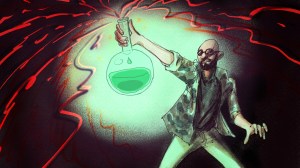A group of citizen scientists with associations to Harvard Medical School have developed a coronavirus vaccine that can be self-assembled and self-administered, and are sharing their findings online under a Creative Commons License. The scientists say they have self-administered the vaccine, but it is not part of any formal FDA approval process.
The group has come together to form the nonprofit RaDVac, and according to their website were inspired to act as the coronavirus pandemic became “the greatest global public health crisis in a century.”
Videos by VICE
“Experts say a vaccine is our best hope for ending the pandemic, but a commercial vaccine won’t arrive until late 2020 or early 2021, if all goes well,” the group writes on its website. “Our mission is rapid development, testing, and public sharing of vaccine recipes that are simple enough to be produced and administered by individual citizen scientists.”
The website states their vaccine can be produced without specialized laboratory equipment—though the process would be more laborious and the results likely more variable—and that only five commercially available ingredients are needed: epitope peptides, chitosan, sodium triphosphate, sodium chloride, and water.
“We have used our knowledge and skills in biomedical research to develop SARS-CoV-2 vaccines, which we are testing on ourselves,” the group writes on its website. “We also aim to connect with other citizen scientists who wish to make and deploy the vaccine, to build on our approach, to advance the sharing of ideas, data, and best practices.”
Once assembled, the vaccine can be self-administered through an intranasal spray, but that safety cannot be guaranteed. Dr. Daniel Klosowski, a chemist who has not tested the vaccine but analyzed the instructions, told Motherboard that it would not be terribly difficult to mix and administer this vaccine.
“The procedure itself seems easy enough for someone with some lab experience,” they said. “The instructions would need a lot more detail for someone without a science background. A graduate student or an undergrad with access to a lab could make this for sure.”
So far the sample size of those who have tried the vaccine is relatively small, with the vaccine being “used repeatedly over a few months, by over 20 self-experimenters.” According to those trials, the most extreme complication seems to be a stuffy nose.
It has yet to be fully determined how effective the vaccine is, and the group states that because the vaccine is a nasal vaccine and not an injected vaccine, determining effectiveness can be more challenging.
“Our vaccine is delivered nasally, and thus is designed to elicit a mucosal immune response at the primary sites of virus entry into the body (nose and lungs). Our preliminary assays have shown positive indications, but require ongoing confirmation,” the website states.
A coronavirus vaccine is of course the holy grail of medicine at the moment, with hundreds of teams all over the world racing to bring a candidate to market. Many groups have suggested that there should be an open-source vaccine candidate, and this appears to be the aim of RaDVaC. DIY medicine is controversial but increasingly popular.
The vaccine was released under a Creative Commons license, which states “you are free to Share (copy and redistribute the material in any medium or format), and Adapt (fork, alter, and build upon) the material for any purpose.”
According to the Frequently Asked Questions section of the website, the group uses four criteria when determining whether to research and develop a vaccine formulation, including whether it can be made from easily obtained and inexpensive materials, whether it can be easily produced, and whether it can be self-administered simply and painlessly through a nasal sprayer. Another criteria is that general designs be “based on decades of published literature demonstrating safety and efficacy in animal models and human trials.”
No patent applications or protections of intellectual property have been made for the vaccine, and all the information and materials needed to assemble and administer the vaccine is listed through the RaDVac website.
The vaccine has not been approved or reviewed by the U.S. Food and Drug Administration.





